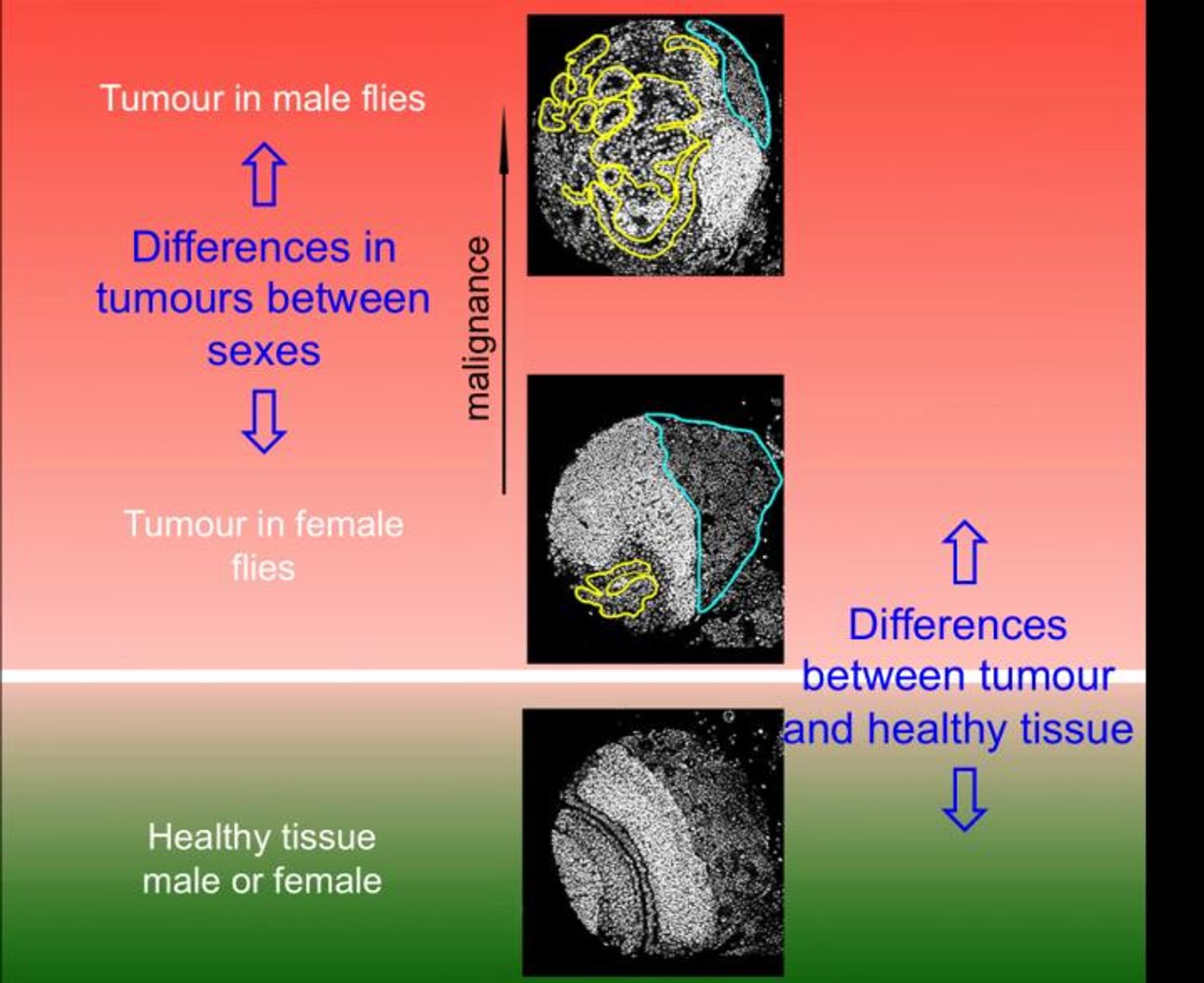Investigating the Molecular Basis of Sex-related Differences in Cancer
There are sex-specific differences in the rate and lethality of various cancers. In general, cancer rates are about twenty percent higher in men, who also experience forty percent higher mortality rates. It’s also been found that women get more side effects from chemotherapy, and women have much higher rates of thyroid cancer. Genetic and molecular factors are thought to be the cause of these differences. Researchers reporting in Science Advances have now used a fruit fly model to learn more about those potential factors.
"We have identified possible regulators responsible for tumor differences between male and female flies," said ICREA researcher Cayetano González, head of the Laboratory of Cell Division at the Institute for Research in Biomedicine (IRB Barcelona). "The results also show that these genes could be potential targets to neutralize their degree of malignancy."
In this work, the researchers analyzed brain tumor development in their fruit fly model. In male fruit flies, the tumors grew more aggressively. The scientists also found proteins that were expressed at significantly higher levels in male fly brain tumor cells compared to those in females.
"Many of the possible regulators of sex-dependent differences in tumors that we have identified in our Drosophila model are highly conserved proteins that are also found in humans," added González.
The scientists focused on one protein in particular, which people also have - Phf7 (chromatin reader PHD finger protein 7). In fruit flies, it plays a role in sex determination. It is also found in male fly tumor cells that are more aggressive, and is not present in female fly tumor cells. When the researchers removed Phf7 from male fly tumor cells, they began to grow more slowly, and gene expression changed. The male tumors without Phf7 began to resemble female tumors more closely.
"Our results show that the proteins responsible for the differences in tumors between males and females can be regulated to reduce the degree of malignancy that is associated with the sex of the individual affected," explained the first author of the report Cristina Molnar, a postdoctoral researcher at IRB Barcelona.
"Understanding the molecular basis responsible for the sex-related differences in the incidence and development of cancer may allow us to find specific treatments for men and women," added González.
US cancer statistics are presented in the video above from last year.
Sources: AAAS/Eurekalert! via Institute for Research in Biomedicine, Science Advances










